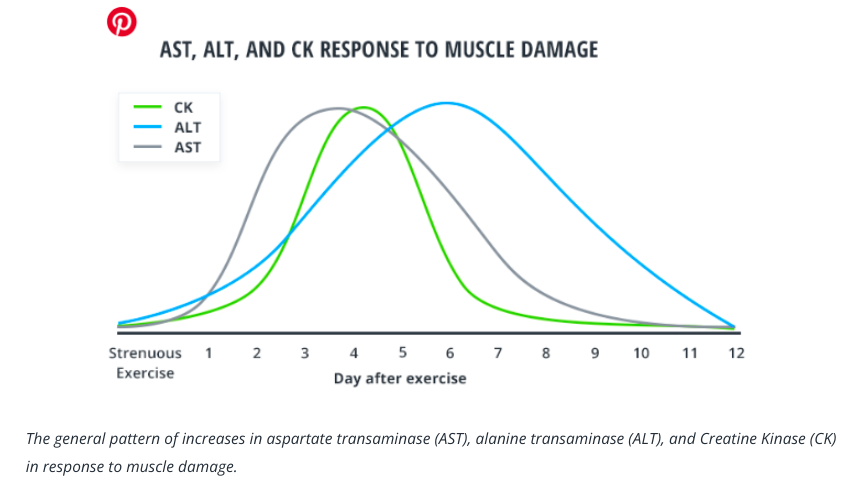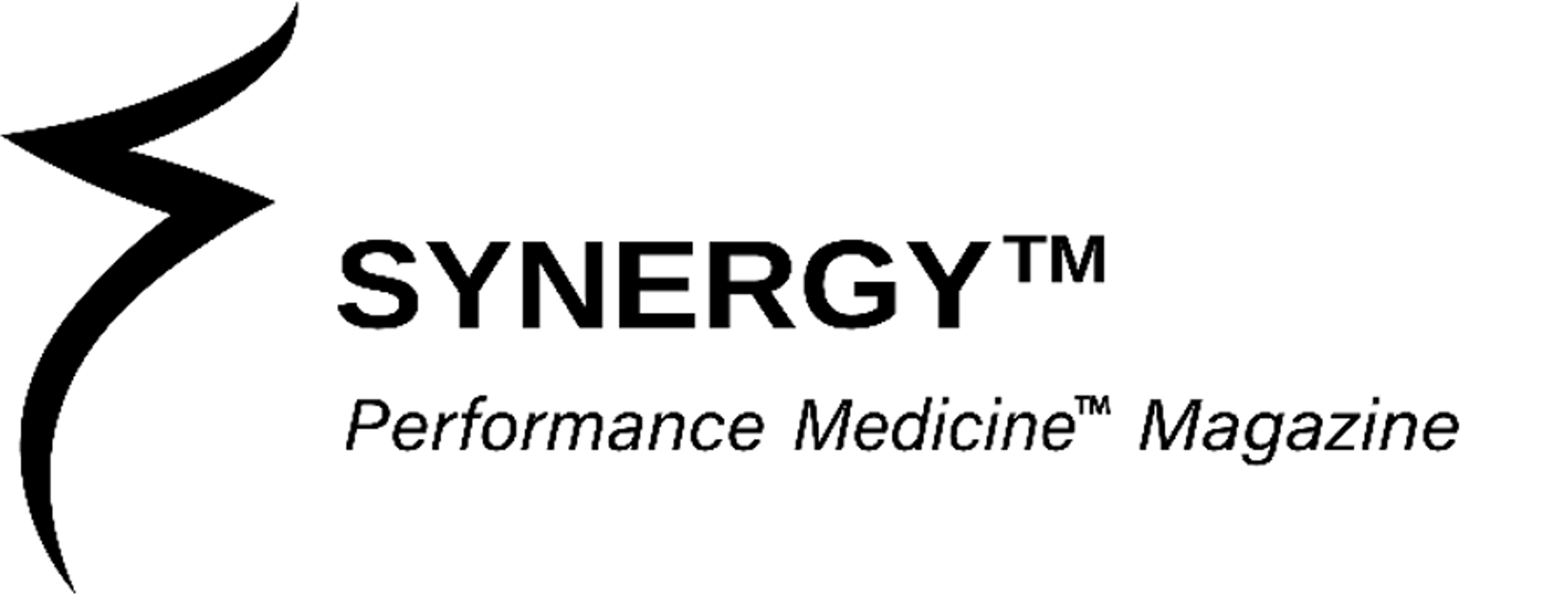Key Biomarkers for Endurance Athletes
The beauty of blood analysis is its ability to define the truth.
Blood analysis provides a unique window into an endurance athlete’s health, performance, and longevity. Biomarkers like Vitamin D and ferritin can directly impact athletic performance while others like cortisol and creatine kinase provide insight about recovery, training volume, and injury prevention.
Analyzing the physiological markers in your blood is a fast and effective way to discover your biometric benchmarks and measure the impact of lifestyle decisions. Your blood never lies; so, illusions are a waste of time.
Endurance athletes can now rely on blood testing to pinpoint areas of focus and implement effective changes to improve performance.
Vitamin D
Vitamin D deficiency is one of the most common nutrient deficiencies across the globe, including among athletes. Vitamin D has many essential roles in the body and its impact on athletic performance is even more pronounced.
Vitamin D can reduce inflammation in the body, specifically the inflammatory marker C-reactive protein [CRP]. A meta-analysis from the journal Nutrients found that Vitamin D supplementation can lower serum CRP levels by 20%. CRP is a protein made by the liver found in blood plasma, whose circulating substrates in blood plasma become elevated in response to inflammation.
Low Vitamin D levels can lead to decreased testosterone – especially in men. Testosterone is an anabolic hormone produced in both men and women that helps increase bone strength and stimulates muscle mass and strength.
Vitamin D is essential for the following:
→ Enhancing bone health;
→ Mitigating inflammation;
→ Increasing muscle mass and strength;
→ Proliferating muscle fiber and strength;
→ Supporting immune function and health
Ingesting Vitamin D3 with Vitamin K2 ensures calcium absorption by your bones versus calcium deposits in your arteries. Vitamin K2 helps ignite the protein molecules in order to strengthen the bones when the calcium is absorbed.

Ferritin
Iron is an important mineral present in red blood cells that carries oxygen to cells in the body. Ferritin on the other hand is a protein that stores iron and releases it when the body needs it. The highest concentrations of iron are found in cells in the liver and immune system. Physicians do not routinely check this marker.
Iron deficiency is one of the most common nutritional deficiencies on the planet – especially in women. Endurance athletes face a greater risk of deficient iron status because it is lost during heavy training periods through sweating, running, and gastrointestinal bleeding that can occur after intense workouts.
Athletes – especially female athletes – should track ferritin status to avoid fatigue and plateauing during athletic events. InsideTracker provides ferritin, serum iron, hemoglobin, and RBC tests, as well as specific recommendations on how to improve them.
It is difficult to determine how much iron is enough. Physicians tend to look at how much hemoglobin is in your blood if you are sedentary. Said tendency is not an accurate path when it comes to endurance athletes. The frequency and intensity of training increases blood volume which dilutes the concentration of hemoglobin.
A more accurate measurement for endurance athletes is the biomarker ferritin. Ferritin is a protein that stores iron in the bone marrow, liver, and spleen for later use. Evidence suggests endurance performance will be compromised with suboptimal ferritin levels even if one’s hemoglobin levels are normal.
Research indicates athlete-specific threshold values for three stages of iron shortage. In addition to hemoglobin and ferritin, they include another marker of iron status termed transferrin saturation – which defines the utilization fraction of your blood’s iron capacity. Details of the three stages are beyond the scope of this content.
Many endurance athletes have suboptimal ferritin levels despite hemoglobin and hematocrit levels being normal or optimal. This is consistent with stages one and two of iron deficiency. Red blood cell production is not decreased but athletic performance will likely be sub-par.
Research suggests that iron has key roles in athletic performance beyond red blood cell proliferation:
→ Low ferritin for athletes may impair oxidative enzymes and respiratory proteins, reducing the ability to use oxygen efficiently;
→ Inflammation via exertion may reduce iron absorption and the ability to mobilize iron to form new red blood cells;
→ Low ferritin levels may impair aerobic adaptation from training. It is unclear whether iron supplements taken by non-anemic endurance athletes can improve aerobic performance. The more severe the iron deficiency the more benefit. But borderline cases may also benefit from a preventative measure;
→ Low ferritin may reduce adenosine triphosphate [ATP] production and mitochondrial biogenesis. This may contribute to swift muscle fatigue, lactic acid proliferation, diminished intracellular signaling, DNA and RNA synthesis, synaptic signaling, active transport, and muscle contraction.
Cortisol
Cortisol, also known as the stress hormone, is a steroid hormone produced by the adrenal glands. It responds to both physical and emotional stress and plays a crucial role in many essential physiological functions. Overtraining may lead to physical stress and high cortisol levels.
Cortisol is an important hormone produced by the adrenal glands and plays many important bodily functions. It is essential for athletic performance and overall health. The key is to balance its levels by managing training, nutrition, and physical and psychological stress.
Exercise represents a form of stress that engages the endocrine system at multiple levels to provide necessary functional responses and morphological adaptations. Normal endocrine function is essential for both acute stress responses and sustaining positive energy status, anabolic/catabolic balance, and body composition.
Relative to endurance exercise, cortisol rises in proportion to intensity. So during high-intensity efforts, cortisol production will be supercharged, once again – a good thing. This extra “hit” gives you the boost you need to do those hard workouts. The minimum intensity of endurance exercise necessary to produce cortisol response is about 60% of VO2 max. Cortisol levels increase linearly with exercise intensity, and this threshold is independent of training
Endurance athletes consistently with high cortisol levels face a greater risk of chronic fatigue, high blood glucose levels, and weight gain. The active ingredient of whey protein [Alpha-lactalbumin] has been found to reduce cortisol and enhance serotonin production. Herbs such as Ashwagandha may help mitigate elevated cortisol levels.
Cortisol levels are high early in the morning and low at the time of sleep onset. The cortisol circadian rhythm is associated with adrenal insufficiency which is directly related to your performance. The hormonal mayhem is influenced by inconsistent sleep patterns, timing and frequency of blue light, room temperature, sleep deprivation, and a host of other variables.
Cortisol [the stress hormone] levels increase with heightened emotional and physical stress – which includes exercise. The adrenal glands release cortisol which triggers the “fight or flight” response of the sympathetic nervous system [SNS]. The SNS is one branch of the autonomic nervous system [ANS]. The other branch is the parasympathetic nervous system [PNS] which is the “rest and digest” response to stress.
Training involves both anabolic and catabolic processes. Body cells break down sugars to provide ATP to do the work necessary for exercise, such as muscle contractions. This is catabolism. Muscle cells also must repair muscle tissue damaged by exercise by building new muscle.
Cortisol breaks down muscle [catabolic] So when levels of cortisol are chronically high, athletic performance and post-workout recovery can decline. Elevated cortisol levels are associated with higher blood sugar levels, age, and sex [women typically have higher levels than men].
The quality of your sleep is critical. The body undergoes more stress from poor sleep habits than you may realize. Adequate sleep – more than seven hours per night – is essential to helping maintain the cortisol circadian rhythm and enhancing your body’s recovery from exertion.
Cortisol is a stress hormone that works overtime thanks to the physical and mental stressors of the daily grist. It increases energy to cope with stress and influences the sleep/wake cycle, blood sugar, and blood pressure. Balancing the ANS cannot be understated.

Creatine Kinase
Swift recovery is vital to an endurance athlete’s health and performance progression. The biomarker creatine kinase (CK) is a useful way to determine general body strain.
Creatine kinase (CK) is an enzyme that’s found in your skeletal muscle, heart muscle, and brain. When any of these tissues are damaged, they leak creatine kinase into your bloodstream. Elevated CK levels may indicate muscle injury or disease. An enzyme is a protein that acts as a catalyst to bring about a specific biochemical reaction.
CK is a cumulative measure of tissue breakdown which allows us to gauge how the body is responding to training loads whether it is strength training, mileage for ultra-endurance athletes, periodization training, and so forth. The biomarker CK indicates how much is released in the bloodstream from the tissue, skeletal muscle, heart, and brain and represents a surefire sign of muscle damage from system overload.
CK is an enzyme that elevates when muscle damage occurs. Test results of this biomarker allow athletes to see how their bodies react to training load and intensity. CK peaks about two to four days after intense exercise and returns to normal levels [< 200 units] for a few days, depending on the intensity of the exercise.
CK was used as a cardiac damage biomarker in the past, but now it’s mainly employed as a muscular overload measurement. Nearly everyone involved with exercise is familiar with delayed onset muscle soreness [DOMS] in which CK usually peaks in the blood a few days after exertion. Measuring CK levels via bloodwork and wearable technology are invaluable steps to monitoring muscle breakdown.
The small amount of CK that’s normally in your blood mainly comes from your skeletal muscles (the muscles that are attached to your bones and tendons). Any condition, injury, or event that causes muscle damage and/or interferes with muscle energy production or use increases levels of CK in your blood. For example, intense exercise can increase CK levels. Muscle diseases [myopathies] such as muscular dystrophy [MS] can increase CK levels.
There are three types of CK enzymes:
→ CK-MM –> Found in your skeletal muscles;
→ CK-MB –> Found in your heart muscle;
→ CK-BB –> Found in your brain tissue
There is a correlation between CK level and injury. A chronically elevated CK will most likely result in muscle pain, muscle soreness, weakness, injury, and more—not ideal for top athletic performance. CK peaks after intense exertion and may remain elevated for several days versus a sedentary person.
Liver Enzymes | ALT and AST
The liver is the main “chemist” in our body. It is the primary location for the conversion of one compound to another. Because of this, the liver can be thought of as the body’s detoxifier. If you have a liver, there is no need to “detox” through juice cleanses or lengthy fasts. Your liver does that for you every day.
To evaluate overall liver function, InsideTracker tests AST, ALT, GGT, and albumin. The first three are enzymes, and albumin is the main protein produced by the liver. Albumin functions as the primary transporter of hormones, drugs, and other compounds in our blood and helps to control the pressure in our circulatory system.
Albumin levels outside of the normal range are rare for InsideTracker users. Low levels are likely caused by severe liver damage and high levels are typically due to dehydration or excessively high protein intake. Both high and low require medical attention.
The other three markers included in our liver group are enzymes that initiate or support the many detoxifying, energy-producing, and overall housekeeping reactions that keep our bodies functioning.
→ ALT → Alanine Transaminase;
→ AST → Aspartate Transaminase;
→ GGT → Gamma-Glutamyl Transpeptidase
ALT and AST are also found in significant quantities in skeletal muscles. When the muscle is damaged, such as in response to exercise, AST and ALT are released from the muscle, and their concentration in the blood increases. GGT is fairly specific to the liver.

Trail runners, road cyclists, and mountain bikers are more susceptible to these types of elevations. CK is another marker of muscle damage that follows the same pattern as ALT and AST after strenuous exercise. Adequate protein intake after strenuous exercise is required to repair the damage.
Training frequency and volume test an endurance athlete’s threshold. ALT and AST are enzymes in the liver and muscles that support detoxification and energy production.
Elevated levels are incurred with muscle damage via strenuous exertion due to resistance and endurance training/events, altitude fluctuations during exertion, excess caloric intake, supplements, and medications to list a few culprits.
One key to understanding what makes you tick from the inside out is blood analysis. To transcend your health, performance, and potential in life and sport it is imperative to know granular metrics unavailable via blood panels at a physician’s office or clinic.
Schedule a FREE CONSULTATION via the blue widget, our contact form, or 401.207.4215. Learn more at Performance Medicine™.




